Dwarf willows: varieties and conditions of detention
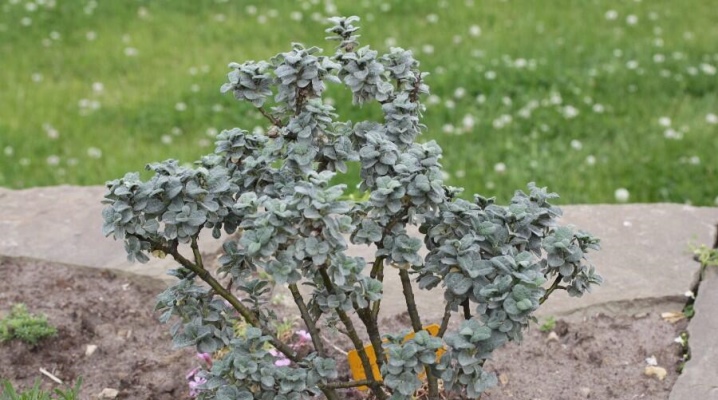
Dwarf willows - globular, Boyda and other species - can become a true decoration of the garden... The length of their shoots does not exceed 1 m, and the variety of forms allows you to create original compositions when decorating the local area. When planning a planting, it is worthwhile to understand in advance the types and descriptions of this tree, find out where the option you like grows, how planting and care is carried out, consider examples in landscape design.
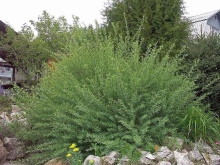
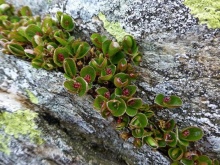
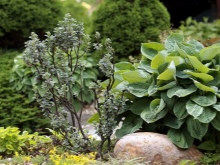
general description
Under the concept of a dwarf willow, a whole group of species of this tree is combined, growing in height by no more than 2 m. Due to the spreading or weeping shape of the crown, the plant looks very decorative. At the same time, the habitat can be very different - from the snow-covered tundra to the shady river banks of central Russia. In nature, miniature trees are most often found in the polar regions.
A dwarf or decorative willow differs from its tall relatives not only in the height of the trunk. The plant is unpretentious, takes root well even on rocky ground, easily survives severe frosts, but does not tolerate heat well. The size of the foliage is also smaller, it is rather oval rather than elongated.
In addition, instead of tree forms, shrubs are most often found here, actively growing, suitable for arranging hedges.
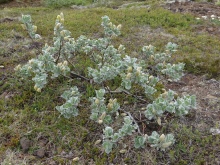
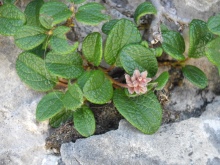
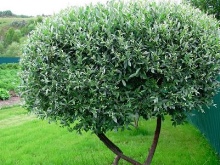
Views
In most cases, dwarf willow grows in the natural zone of the tundra - where cold weather persists for most of the year. Miniature trees and shrubs are characterized by a slow rise in height, and the variety of species allows every gardener to find the right types of plants to decorate their garden. The most interesting of them are worth considering in more detail.
- Mesh... A very beautiful species that can grow in high humidity conditions, as well as in arid areas, prefers alkaline soils. The plant has excellent adaptability, when planted, it quickly forms a stable root system, in nature it is found in tundra conditions. Differs in the small size of the leaves with an unusual mesh on top, a neat bush shape. In autumn, the crown acquires an elegant yellow color.

- Creeping... The species, easily adapting to the most difficult conditions, is suitable for both dry areas and places with high soil moisture levels. The plant in the form of a creeping shrub has a long flowering period, pink and yellow catkins look very decorative. The maximum height is up to 40 cm, the shade of the leaves is unsaturated green in the upper part, a little bluish below.
With regular pruning, the plant can bloom throughout the season.

- Arctic... A dwarf species, very cold-resistant, but poorly tolerant of heat. Young shoots of the arctic willow have an unusual yellow color, darken over time.
The branches are creeping, grow rather quickly, occupying the space around, and reach 1 m in length.

- Spherical... Sometimes this variety is also called hairy because of the voluminous "cap" of the crown. Its shape resembles an almost regular circle, and it does not require any effort to form, brittle branches break off themselves at the base.
Pruning for growing a globular dwarf willow on a trunk is required only in the first 3 years.

- Swiss or Salix helvetica... The shrub form found in the Alps grows up to 70 cm.The main advantage of the Swiss willow is the presence of silvery hairs on the gray-green leaves; during the flowering period, the earrings also have a shade of a noble metal with a gray or purple tint.
The plant is sensitive to soil fertility, the amount of sun, requires abundant watering, good drainage.
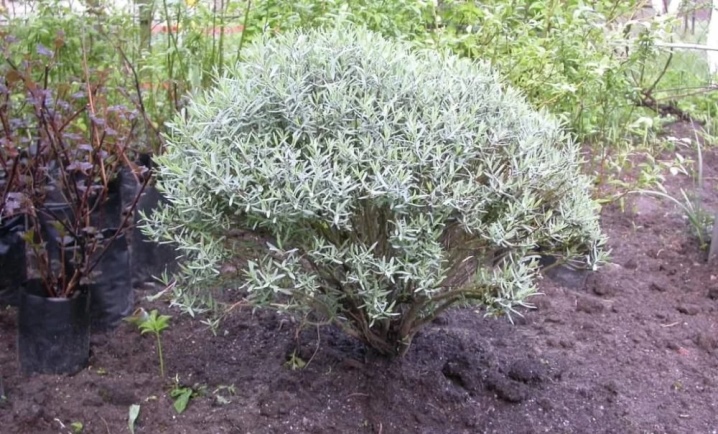
- Iva Boyd (Latin name Salix Boydii). A woody form of a dwarf willow that looks like a bonsai tree. The crown consists of rounded leaves, abundantly strewn with branches, pruning is not required - the species copes well with the formation of a decorative appearance on its own.
Boyd's adult willow reaches 30 cm, gains no more than 5 cm per year, looks spectacular in the design of rockeries, can be used as a tapeworm.
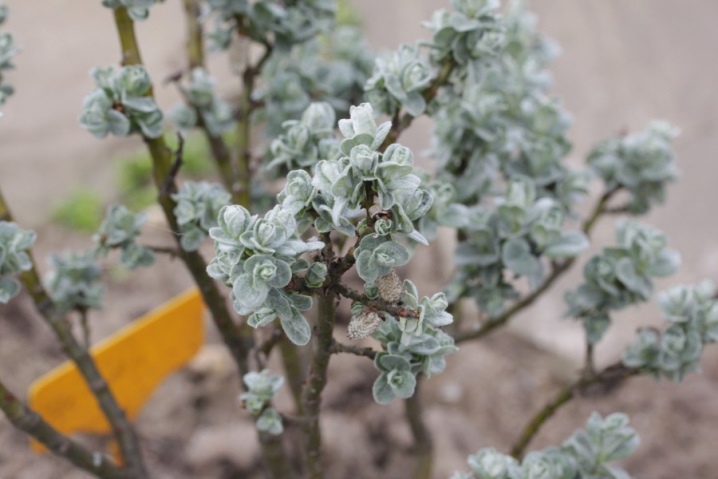
- Opposite-leaved... A shrub with a rounded crown shape, grows in nature in Korea and Japan, but tolerates the climate of central Russia quite well with a sufficient amount of snow. The plant has long, opposite leaves of a gray-green hue, with regular shearing, it maintains its shape well, in the absence of pruning, it spreads.
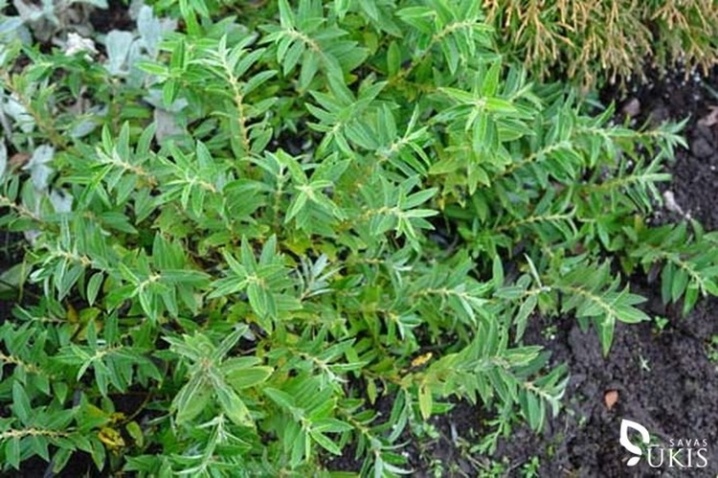
- Lance-shaped... The species grows up to 1-2 m in height, has a creeping shape, easily gains a lot of side shoots. The characteristic sharp shape of the leaf visually resembles a spear.
The plant is found in nature in mountainous regions, in the tundra and forest-tundra, it does not tolerate excess moisture.
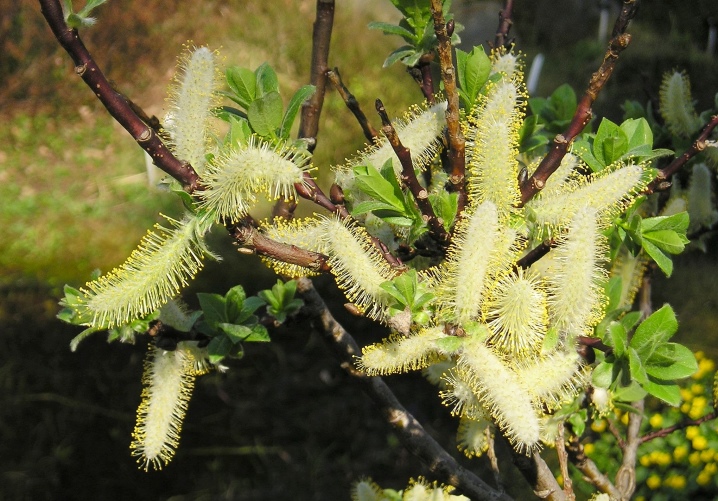
- Blueberry... A low-growing shrub form, most often found in swamps. It grows up to 20-80 cm. The crown is covered with oval gray-green leaves. The shrub is not too decorative, but looks good in rockeries.
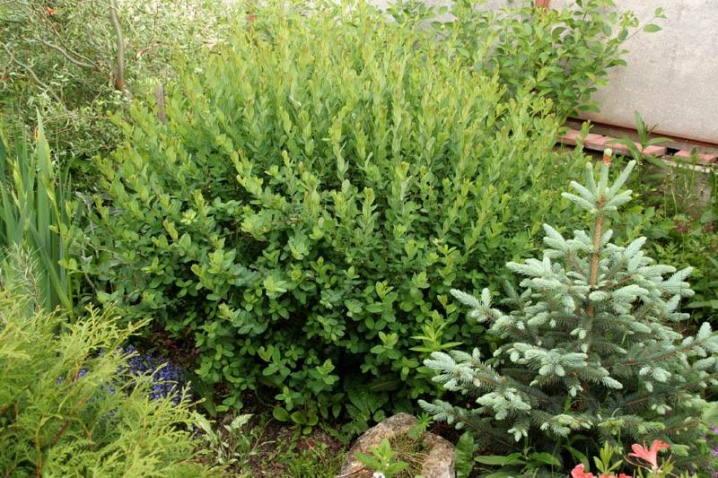
Dwarf willows look very attractive, well suited for use in single and group plantings. Slow growth, high winter hardiness, good survival rate ensure the successful cultivation of these species even by novice summer residents.
The best varieties
The varietal diversity of dwarf willows is also great. Many options have been tested by gardeners and are especially popular among landscape designers. The simplest and at the same time decorative options are worthy of special attention.
- "Armando". A beautiful variety of creeping willow with a height of 10-40 cm. It has a good survival rate, especially on stony soils, the flowers-earrings first have a pink tint, then gradually turn yellow. The shrub has bright, shiny green leaves that look very decorative.
- Green Carpet. A variety of creeping willow, characterized by the vibrant green of the deciduous carpet. The plant grows up to 30 cm in height, has a cushion-shaped crown, covered with silvery small leaves. During the flowering period, yellow catkins are formed on the bush.
- Glanspean... A variety of shaggy willow, characterized by a very decorative crown shape. It practically does not require pruning, the plant already looks quite attractive.
- Wehrhahnii... Spear-shaped willow variety, native to Switzerland. For his decorativeness he has repeatedly received prizes at international exhibitions. During the flowering period, the bush is strewn with large yellow earrings. The crown is wide, spherical, the height of an adult plant can reach 1.5 m.
- "Hakuro nishiki"... This variety of spherical willow is one of the most beautiful and decorative, well suited for specimen plantings. The spherical crown at the beginning of flowering is strewn with flowers of a pale pink hue. The tree looks good when grown in standard form.
- "Gracilis". A variety of purple spherical willow growing up to 50-150 cm in height. The variety is appreciated for its decorative effect, is actively used in hedges, as part of flower beds. Keeps its shape well when cutting, suitable for creating spectacular figures. The leaves have a silvery-green hue, narrow, purple catkins, are formed in spring during the flowering period.
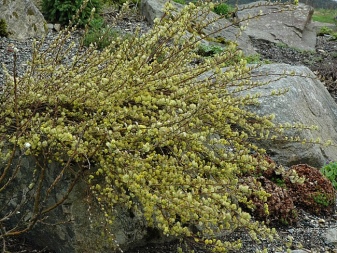
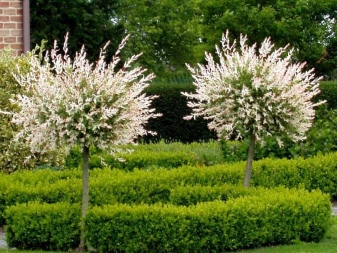
These varieties of dwarf willows are especially popular for placement in plots - in flower beds, flower beds, hedges.
Planting and leaving
Caring for dwarf willows is pretty simple.Woody and shrub forms, when planted on wet soils, generally do not require watering. When placed in arid areas, willows will still need to be watered every 4 days on higher elevations. It is recommended to additionally spray the variety "Hakuro nishiki", carrying out regular sprinkling in the heat.
Top dressing is necessary several times a year using complex mineral fertilizers. It is worth adhering to the following scheme:
- add azofoska at the end of March (again in June);
- in early April, rotted manure is laid under the root.
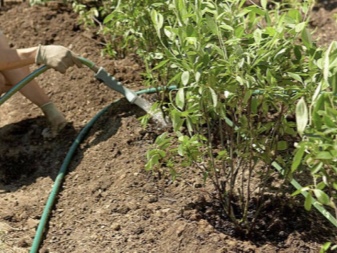
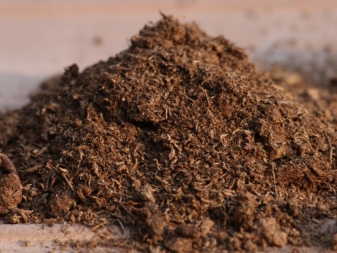
The list of care measures for most dwarf species includes regular pruning... It is performed with pruning shears, removing some of the branches above the buds every 14 days. For plants that already have a satisfactory crown shape, sanitary pruning is practiced to eliminate dry or overgrown shoots. Work is carried out in spring time annually.
Planting dwarf willows is recommended in sandy or loamy soil, most species are best placed in damp areas.
Special soil preparation is not necessary. Plants take root pretty well, you don't need to dig a deep hole for them.
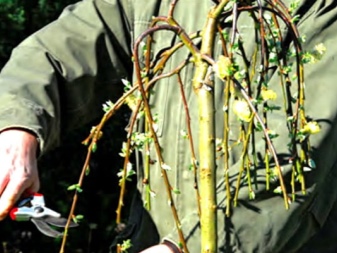
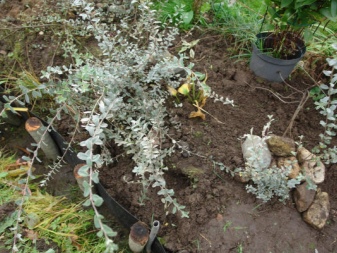
Reproduction
Dwarf willows reproduce in two ways. The generative method - by seeds - is considered difficult and time-consuming, but gives good results with some effort. When using it, you need to perform a number of actions.
- Collect material after maturation. The earrings should dry out and begin to fall off.
- Prepare pots or containers of soil. You can take garden soil.
- Sow seeds without deeply burying them.
- Cover with foil until shoots emerge.
Young willows should be grown in a greenhouse or greenhouse at a temperature of about +25.26 degrees Celsius. You can transplant young trees or bushes after they have formed a root system, and the shoots themselves reach 15-20 cm in height.
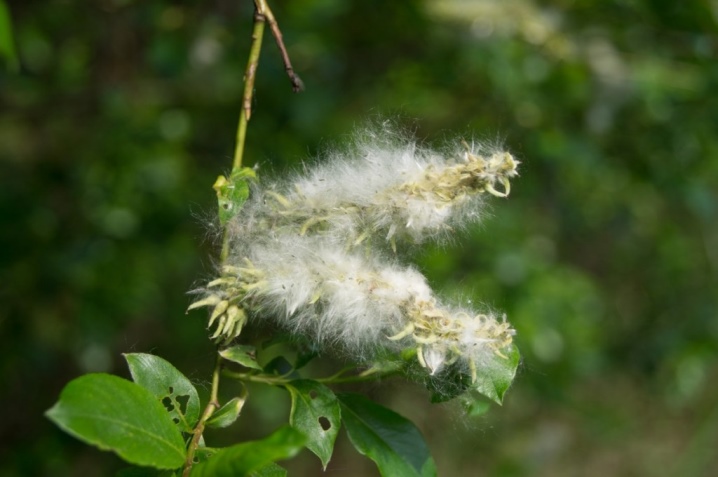
When propagating by cuttings, water or sand can be used for rooting. They are cut in the spring, 10-14 days after the formation of the roots, young seedlings are ready to be placed in a permanent planting site.
In creeping species, root cuttings can be used, which also give good growth rates.
Spherical dwarf forms are best propagated by seeds or grafting on a stem.
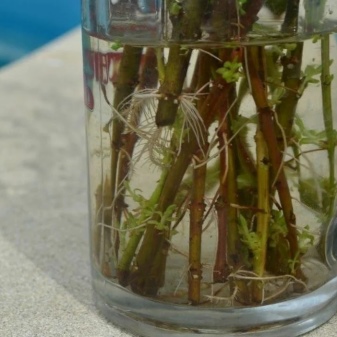

Examples in landscape design
For the garden, the local area, dwarf willows are a real find. The scheme of a flower bed or rockery with their use usually involves planting a bush as a tapeworm. Stamp forms look great in the center of the lawn, framed by a green, even lawn.
- The spherical willow in the composition of rockery is effectively combined with conifers and other low-growing plants.
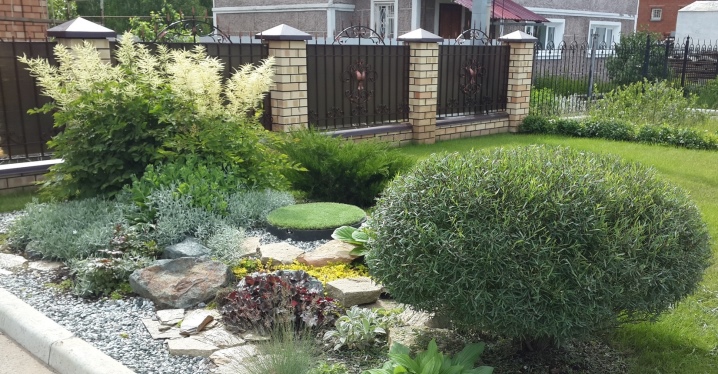
- Miniature reticulated willow with a characteristic leaf pattern looks impressive in gardens with a natural landscape.
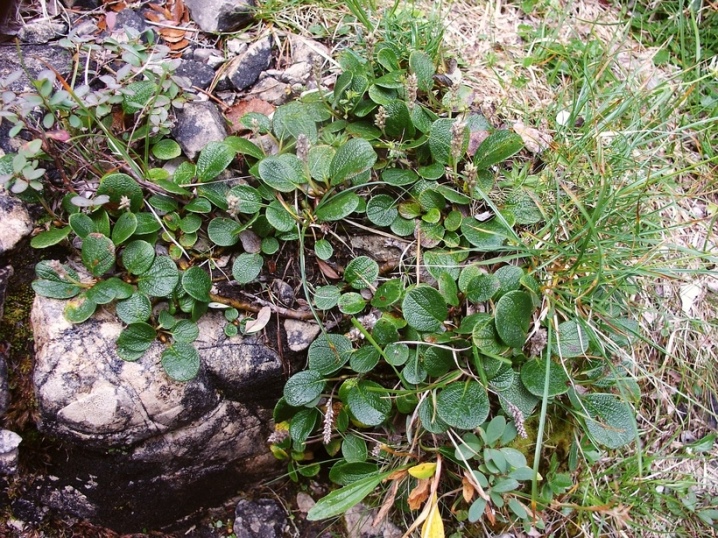
- Hakuro nishiki willow hedges look no less picturesque than their standard forms.
During the flowering period, its bushes can become the main decoration of the garden.
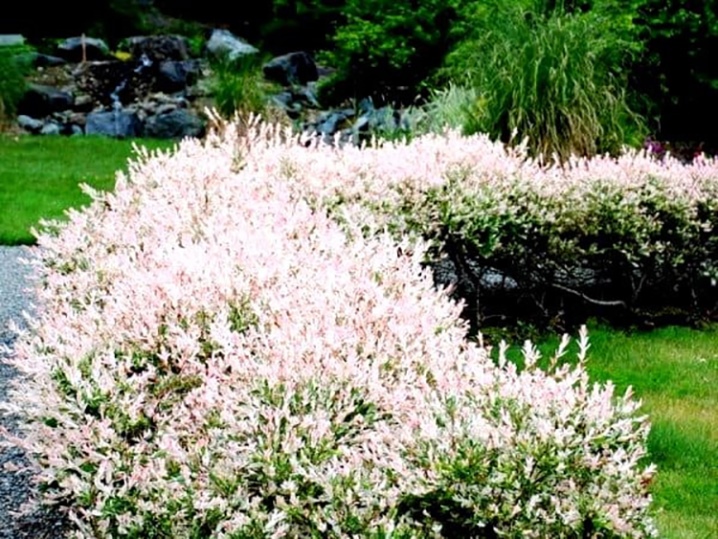
For the features of the formation of a dwarf willow, see the next video.



































































The comment was sent successfully.